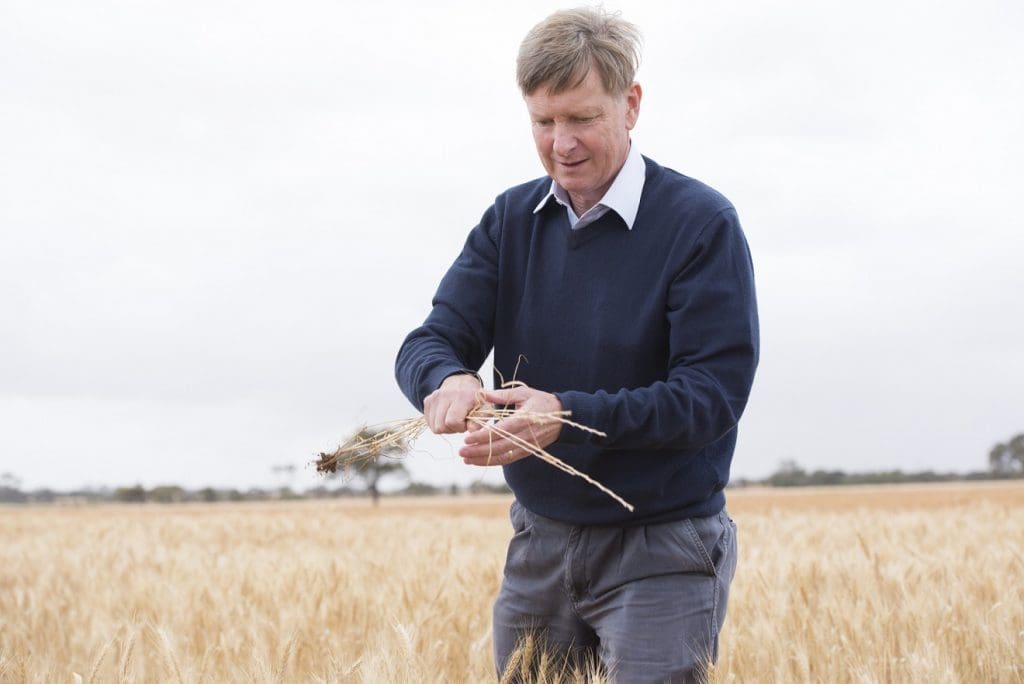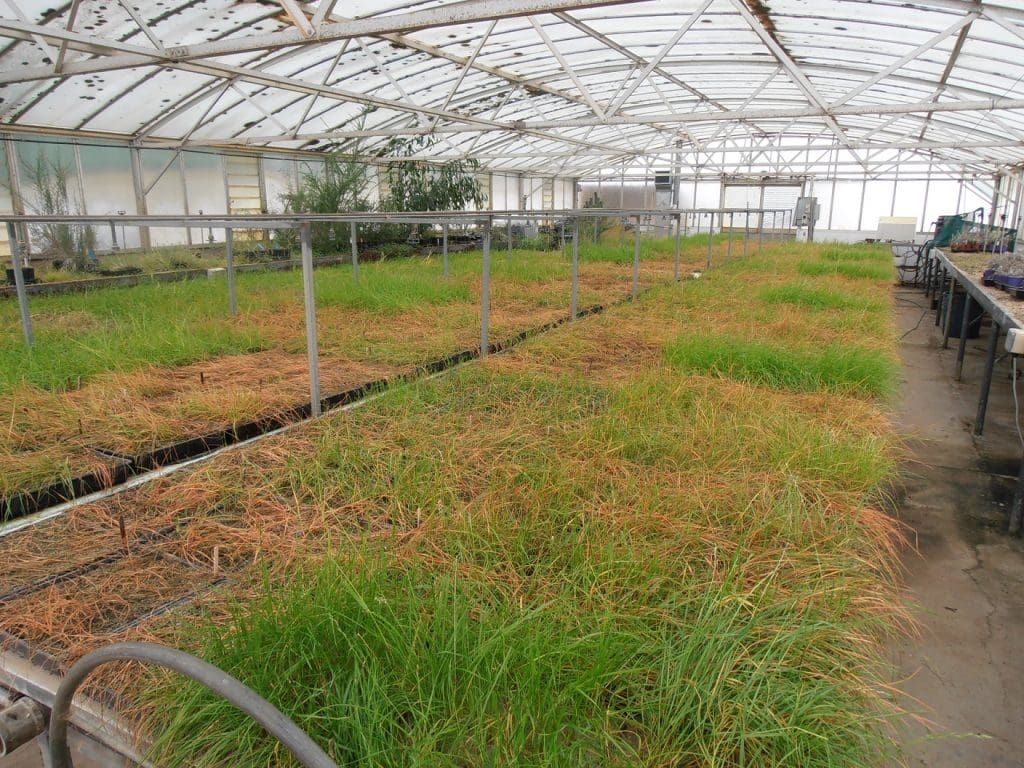
University of Adelaide’s Dr Chris Preston says the recent and pending releases of a suite of new pre-emergent herbicides will broaden the options for growers to mix and rotate through the crop sequence, but they will not fix the ryegrass problem on their own and should not be considered the new ‘go-to’ products.
THE new decade is bringing with it some truly new pre-emergent herbicides with activity on annual ryegrass.
With multiple-resistance to current pre-emergent herbicides looming large, it is essential that plans are put in place to ensure that these new herbicides can do the job of keeping ryegrass numbers low well into the future.
University of Adelaide weed management professor, Dr Chris Preston, has watched the multiple-resistance and cross-resistance story unfold through the weed surveys and grower submissions to the testing services across southern Australia.
“Annual ryegrass is well-known for its ability to evade different herbicide modes of action,” he said.
“In recent years we have found a number of populations that have resistance to pre-emergent herbicides in Groups J, K and D.”
The herbicide resistance ‘picture’ in Australia is based on randomly-selected weed samples collected during official weed surveys and samples that growers or agronomists send in for testing, often following an apparent failure of a herbicide in the field.
“Through herbicide resistance testing we are finding that an increasing number of ryegrass populations have ‘alphabet resistance’, that is, resistance to multiple modes of action,” Dr Preston said.
“That doesn’t mean that none of the herbicides work, some will still have good efficacy in the field, but possibly not for long. It is a clear indication that the ‘mix and rotate’ strategy must be implemented across the crop sequence.”
Two recently-released pre-emergent herbicides (in Groups K and Z) and two more (in Groups Q, E) in the final stages of registration with release expected in 2020 or 2021, will broaden the options growers have to keep ryegrass numbers down.
Coupling the mix and rotate strategy for pre-emergent herbicides with strong crop competition is a winning combination within the WeedSmart Big 6.
What’s the difference between multiple-resistant and cross-resistant weeds?
Short answer: Multiple resistance is due to multiple genes present in the plant conferring resistance to several herbicides while cross-resistance involves a single gene conferring resistance to several herbicides.
Longer answer: Multiple-resistance is where a weed possesses multiple resistance mechanisms that allow it to evade several different herbicide modes of action. Mixing and rotating between the available herbicides is the best option as the population will have varying levels of resistance and some herbicides will still be effective.
Cross-resistance is where a weed possesses a single resistance mechanism that enables it to evade multiple herbicide modes of action. Cross-resistance can make a weed resistant to a herbicide that it has never been exposed to. For example, resistance to Groups J and K appears to be genetically linked in some populations, with examples of Group J use selecting for resistance to Group K, and vice versa. In this situation, rotating between Groups J and K will not be sustainable.
A broader herbicide strategy will be required to keep these two groups as viable options in the farming system.
Resistance to one herbicide in a MOA group does not mean the population is resistant to all herbicides in that group. For example, in Group D resistance to trifluralin is quite widespread while resistance to propyzamide, also Group D, is rare and populations can usually be controlled by using the full rate of propyzamide. Similarly, resistance to Group K Butisan is being seen in the field while Sakura, also Group K, is still effective.
The term ‘alphabet resistance’ covers all populations that have resistance to several herbicides – often both pre-emergent and post-emergent use patterns.
What are the new herbicides?
Short answer: Luximax (cinmethylin, Group Z) is now registered and available for use in 2020, carbetamide (Group E) is approved and a Group Q active is pending approval from the APVMA. They follow the recently-released Group K herbicide Devrinol-C (napropamide) that belongs to a unique chemical class (acetamides) within Group K.
Longer answer: The release of these new pre-emergent herbicides will broaden the options for growers to mix and rotate through the crop sequence. They will not fix the ryegrass problem on their own and should not be considered the new ‘go-to’ products. Annual ryegrass across Australia has been exposed to herbicides over a long period of time and populations can be expected to possess multiple resistance mechanisms.
In the face of increasing cross-resistance in annual ryegrass it is conceivable that some weed populations may challenge these new herbicides as a result of previous exposure to other herbicides. This highlights the importance of using the right mixing partners to ensure these new herbicides can be effective tools for ryegrass control.
How do I set up an effective mix and rotate strategy for pre-emergent herbicides?
Short answer: Get some resistance testing done on seed from ‘survivor’ ryegrass plants to see what still works; and boost crop competition.
Longer answer: Knowing what works is the first step. This involves collecting ryegrass seed and running tests with multiple herbicides. This can be done every five years or so as resistance to pre-emergent herbicides evolves relatively slowly.
Once you know what the pre-emergent options are, look for opportunities to mix and rotate the herbicide groups throughout the crop sequence. If there are limited options for one crop, be sure to ‘save’ those options for exclusive use in that crop. Where there are opportunities to mix pre-emergent herbicides, take them. Always apply the mixing partners at full label rates.
Growing a competitive crop is an important tactic in maintaining low weed numbers and delaying resistance to pre-emergent herbicides.

Annual ryegrass has been exposed to many different herbicides and there are now populations that have ‘alphabet resistance’ (i.e. resistant to multiple modes of action). Seed testing can reveal what products still work.
Source: WeedSmart
……………………………..
How to ask a WeedSmart question
Ask your questions about alphabet resistant annual ryegrass on the WeedSmart Innovations Facebook page WeedSmartAU, Twitter @WeedSmartAU or the WeedSmart website www.weedsmart.org.au/category/ask-an-expert/
‘WeedSmart’ is an industry-led initiative that aims to enhance on-farm practices and promote the long term, sustainable use of herbicides in Australian agriculture.
Grain Central: Get our free daily cropping news straight to your inbox – Click here

HAVE YOUR SAY